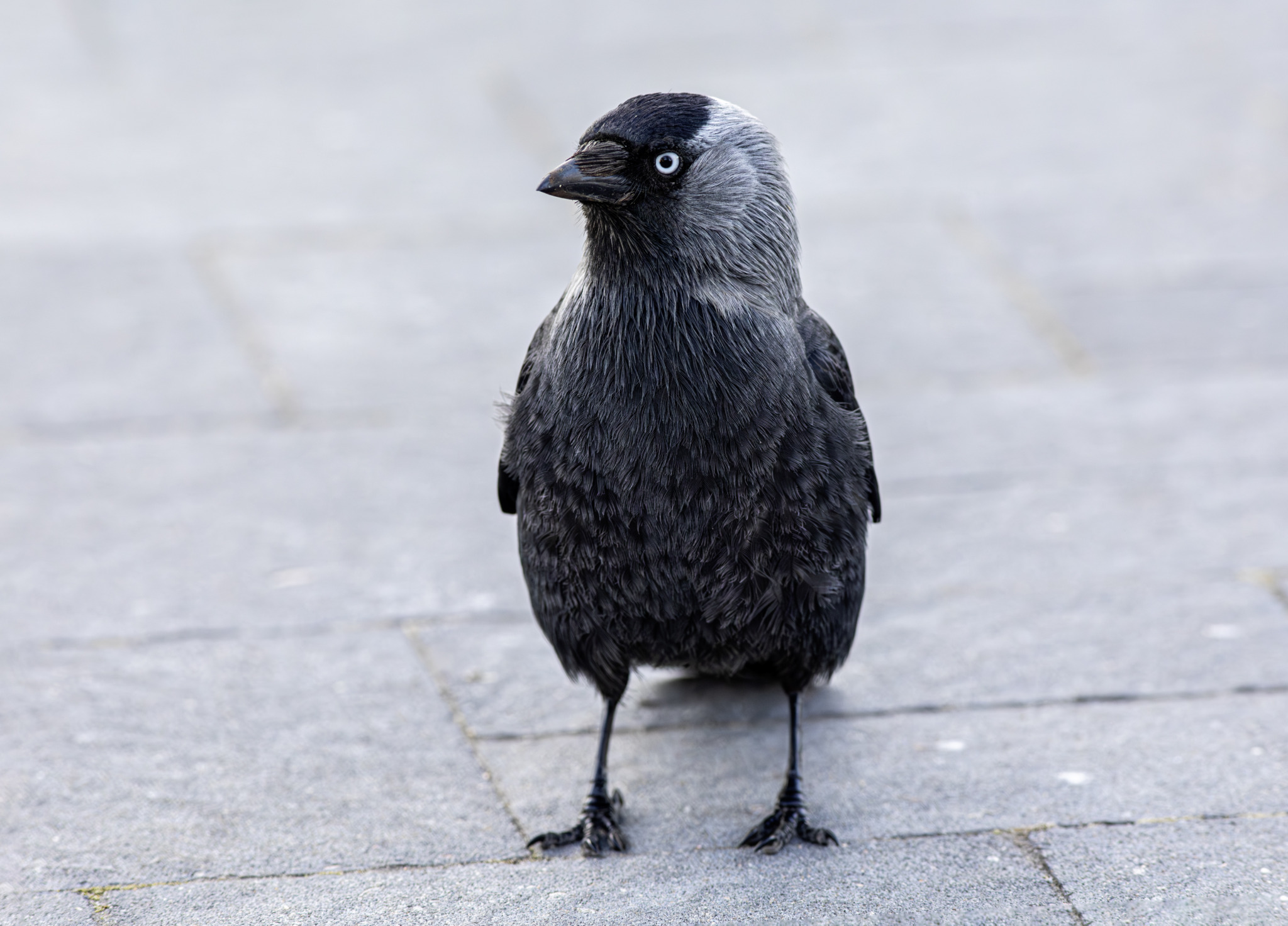The Eurasian Jackdaw (Corvus monedula) is a small, highly social member of the crow family, Corvidae. Here are some key features and characteristics of the Eurasian Jackdaw:
- Appearance:
- Size: Jackdaws are relatively small compared to other corvids, measuring about 34 to 39 centimeters (13 to 15 inches) in length, with a wingspan of 64 to 73 centimeters (25 to 29 inches). They typically weigh between 220 to 270 grams (7.8 to 9.5 ounces).
- Plumage: Adults have a distinctive appearance with glossy black plumage on their head, wings, and tail. Their nape, sides of the neck, and chest are a lighter, slate-gray color. The eyes are pale, almost white, which contrasts strikingly with their dark feathers.
- Juveniles: Young jackdaws have duller plumage and dark eyes, which gradually lighten as they mature.
- Habitat:
- Jackdaws are highly adaptable and inhabit a wide range of environments, including woodlands, farmland, coastal cliffs, and urban areas. They are often found near human settlements where food is readily available.
- Distribution:
- Eurasian Jackdaws are widespread across Europe, North Africa, and parts of Asia. They are resident birds in much of their range but may undertake short migrations or local movements depending on food availability and weather conditions.
- Diet:
- Jackdaws are omnivorous and opportunistic feeders. Their diet includes insects, small mammals, eggs, seeds, fruits, and carrion. In urban areas, they are known to scavenge food scraps and forage in garbage bins.
- Behavior:
- Social Structure: Jackdaws are highly social and often form large flocks, especially outside the breeding season. They are known for their complex social interactions and strong pair bonds.
- Communication: They are vocal birds with a wide range of calls used for communication within the flock. Their calls are often described as “jack-jack” sounds, which is the origin of their name.
- Intelligence: Jackdaws are intelligent birds capable of problem-solving and using tools. They have been observed engaging in play and demonstrating curiosity about their environment.
- Breeding:
- Nesting Sites: Jackdaws prefer to nest in cavities, such as tree holes, cliff crevices, and building structures like chimneys and attics. They may also use nest boxes provided by humans.
- Reproduction: The female typically lays 4 to 6 eggs, which are incubated for about 17 to 18 days. Both parents take part in feeding and raising the chicks, which fledge about 30 to 35 days after hatching.
- Conservation:
- The Eurasian Jackdaw is not considered threatened and has a stable population. They benefit from their adaptability to diverse habitats and their ability to coexist with humans. However, they can sometimes be considered pests, especially in agricultural areas where they may damage crops.
Overall, the Eurasian Jackdaw is a fascinating and highly adaptable bird, known for its intelligence, social behavior, and distinctive appearance. Its presence in both rural and urban landscapes makes it a familiar and well-loved species across its range.
Visited 388 times, 9 visit(s) today
Views: 404
Subscribe to the newsletter:
